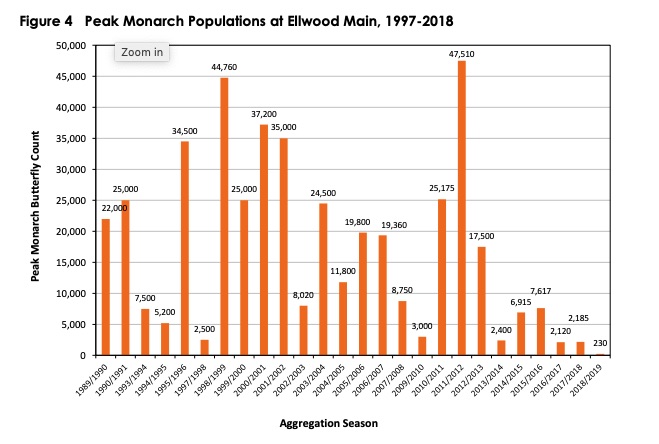Emergency Cuts at Ellwood Butterfly Grove
City Trims Back Trees and Branches to Prevent Danger to Homes and Trail Users

Eucalyptus trees thrived on Ellwood Mesa after horticulturalist Ellwood Cooper planted 50,000 of them in the 1870s, but a seven-year drought in the 2010s brought bug infestation, disease, and dead trees to the remaining groves. The area is a famous wintering spot for monarch butterflies, which once hung out in the trees in astonishingly large clusters. This past winter and spring, large eucalyptus branches fell onto homeowners’ properties abutting the Ellwood Mesa butterfly preserve; last week, 42 trees were trimmed back on an emergency permit to prevent further damage.
Get the top stories in your inbox by signing up for our daily newsletter, Indy Today.
A number of trees fell behind the 500 block of Coronado Drive, blocking the public trails that criss-cross the groves. They were cut at their bases. Heavy limbs on the 42 other trees were uneven, and the trees were out of balance. One tree had landed on a house and another in a backyard, both causing significant damage. “Fortunately, no one was hurt in any of these incidents,” city spokesperson Kelly Hoover said.
A report to the Goleta City Council, which will review the emergency permit at its meeting on July 21, states the trees are prone to “sudden limb failure” especially when strong winds follow wet weather. The trees were trimmed down to between one and 30 feet, enough so that further tree falls would not hit neighboring properties. The ground is now covered with about six inches of newly chipped wood.
The butterfly habitat numbered roughly 6,000 eucalyptus trees when the drought struck and left about 1,200 dead or dying by 2017. Rather than taking them all out, Goleta opted to remove only the ones that endangered trails and trail users.
The attempt to save the grove for the butterflies faces an uphill challenge, however. Studies in the Midwest speculate that herbicide-resistant strains of soybean and corn plants enabled farmers to use Roundup on their fields to eliminate weeds, including the milkweed that is the monarch caterpillars’ only food. As well, butterfly preservationists contend that logging in monarch habitats in Mexico removed large swaths of trees that had provided shelter.
In the Ellwood groves, the butterfly count reached a high of 47,510 in 2011-2012. Records were first kept starting in 1989, but 20 years later, the count was down to 300. To bring back both the butterflies and the grove’s health, the city invested in a Habitat Management Plan that includes pruning dangling branches and vulnerable trees, and planting new eucalyptus trees and nectar sources.






